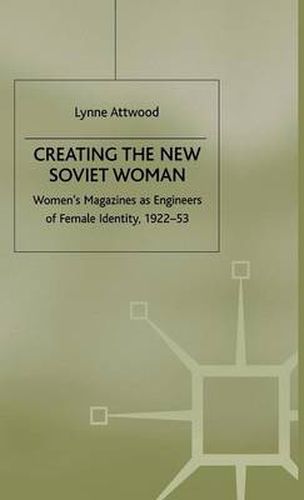Readings Newsletter
Become a Readings Member to make your shopping experience even easier.
Sign in or sign up for free!
You’re not far away from qualifying for FREE standard shipping within Australia
You’ve qualified for FREE standard shipping within Australia
The cart is loading…






This title is printed to order. This book may have been self-published. If so, we cannot guarantee the quality of the content. In the main most books will have gone through the editing process however some may not. We therefore suggest that you be aware of this before ordering this book. If in doubt check either the author or publisher’s details as we are unable to accept any returns unless they are faulty. Please contact us if you have any questions.
The Soviet attempt to propagandise the new Soviet woman through the magazines Rabotnitsa and Krest'yanka from the 1920s to the end of the Stalin era is explored here. Women were expected to play a full role in the construction of socialism, but they also had to reproduce the population. Balancing work and family did not prove easy in a climate of shifting economic and demographic priorities, and the periodic changes made to the model are charted here.
$9.00 standard shipping within Australia
FREE standard shipping within Australia for orders over $100.00
Express & International shipping calculated at checkout
This title is printed to order. This book may have been self-published. If so, we cannot guarantee the quality of the content. In the main most books will have gone through the editing process however some may not. We therefore suggest that you be aware of this before ordering this book. If in doubt check either the author or publisher’s details as we are unable to accept any returns unless they are faulty. Please contact us if you have any questions.
The Soviet attempt to propagandise the new Soviet woman through the magazines Rabotnitsa and Krest'yanka from the 1920s to the end of the Stalin era is explored here. Women were expected to play a full role in the construction of socialism, but they also had to reproduce the population. Balancing work and family did not prove easy in a climate of shifting economic and demographic priorities, and the periodic changes made to the model are charted here.